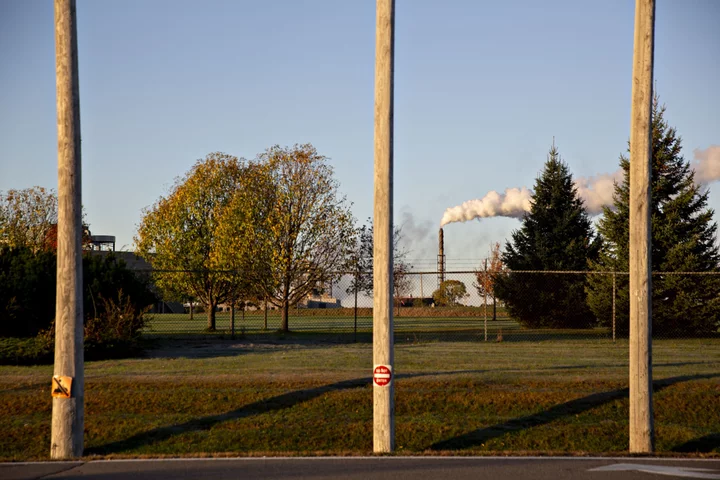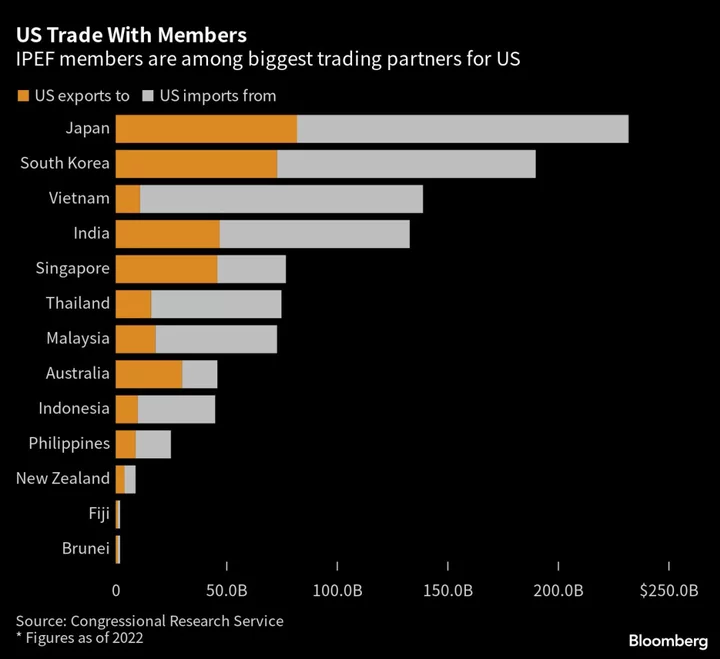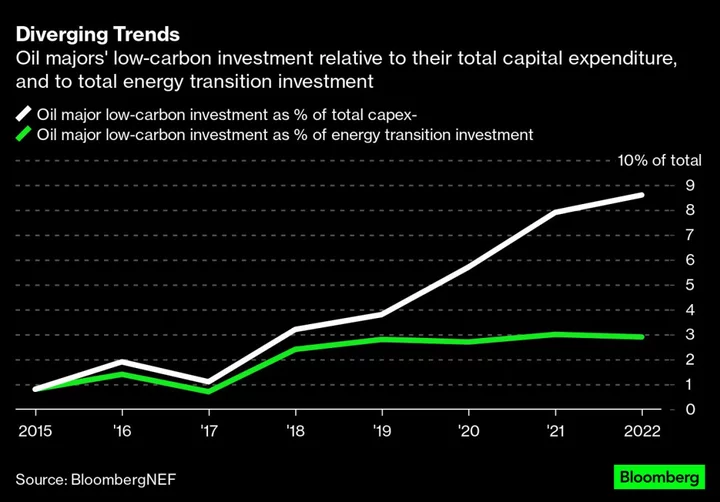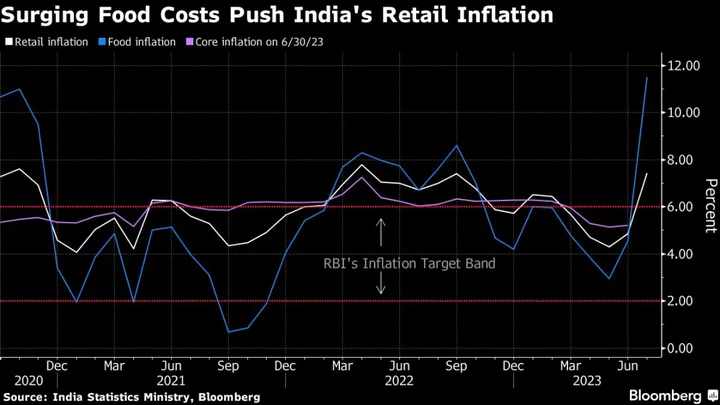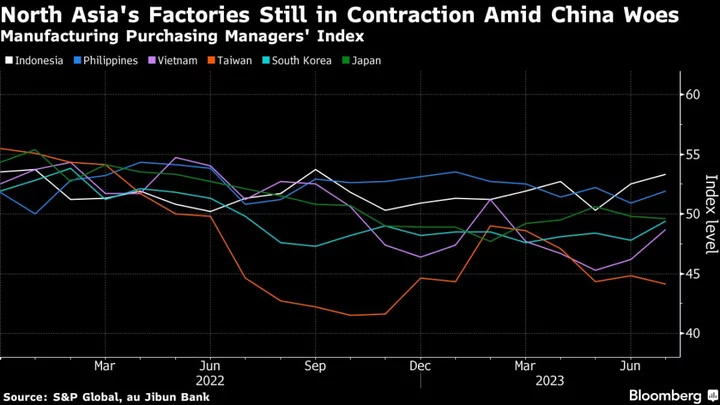DuPont de Nemours Inc., Chemours Co. and DuPont spinoff Corteva Inc. agreed to pay $1.185 billion to resolve hundreds of pollution claims by cities, towns and local water agencies over “forever chemicals” that allegedly fouled waters across the US.
The companies will set up a fund to settle lawsuits claiming that per- and polyfluoroalkyl substances, or PFAS, made by DuPont tainted drinking water and subjected consumers to higher rates of cancer, according to a statement Friday.
The statement was issued shortly before Bloomberg reported that 3M Co., the largest PFAS maker, had struck a separate, tentative settlement of at least $10 billion over water pollution claims in the same multidistrict litigation, being overseen by a federal judge in Charleston, South Carolina. That accord would be the largest PFAS pact in the US and one of the biggest mass tort deals ever.
Read More: 3M Said to Be in at Least $10 Billion PFAS Pollution Accord
Under a cost-sharing agreement between the three companies in the DuPont pact, Chemours will cover about $592 million of the settlement, DuPont approximately $400 million and Corteva roughly $193 million, the companies said.
‘Impressive Step’
“This is an impressive step toward righting a corporate wrong that threatened the health of all Americans,” said Scott Summy, one of the lawyers leading the consolidated PFAS litigation in federal court. “DuPont has decided to put money into water systems’ hands today rather than delaying payment for years of trial.”
Holly Froum, a Bloomberg Intelligence analyst who has been following the PFAS litigation, said in a note Friday that it remains to be seen how many water authorities will sign off on the deal.
The settlement would include any future water system required by the US Environmental Protection Agency to test for fluorinated chemicals. That would mean approximately 9,500 drinking water utilities, DuPont spokesman Dan Turner said. At the same time, the pact would apply to just a small portion of potential nationwide liability over PFAS in fire retardants, Turner said.
“Each defendant, including potentially the US government, will need to address their portions,” he said.
‘Larger Battle’
Plaintiffs’ lawyer Paul J. Napoli, of Napoli Shkolnik PLLC, estimates that tens of thousands of water utilities would receive some aid from the settlement within a year if it is approved.
The companies’ offer to pay more than $1 billion is effectively an acknowledgment that they share responsibility in the contamination of the country’s drinking water, Napoli said.
“It’s a big victory against DuPont, but a small piece of the larger battle,” he said.
Nothing in the companies’ statement or in what they have said earlier suggests they concede wrongdoing.
DuPont and Chemours have been here before. In 2017 they agreed to pay $670 million to settle a federal class action suit in Columbus, Ohio, brought on behalf of more than 3,500 residents who blamed their illnesses on PFAS they alleged polluted their drinking water.
Eve of Trial
3M’s much larger settlement comes as the company was set to face its first federal trial, in Charleston, starting June 5. Analysts have said the St. Paul, Minnesota-based manufacturer could face about $143 billion in total PFAS liability. The smaller DuPont pact reflects DuPont’s share of the PFAS market, which is dwarfed by 3M’s production of the compounds over the decades.
Read More: 3M Heads to Trial in ‘Existential’ $143 Billion PFAS Litigation
3M and other makers of PFAS including DuPont last month agreed to pay more than $100 million to resolve a Georgia city’s lawsuit claiming the chemicals polluted its drinking water.
Read More: 3M, DuPont to Pay $100 Million to End Georgia PFAS Suit
Researchers have found that PFAS, an industrial product used since the 1950s in products ranging from computer chips and nonstick frying pans to cosmetics, never breaks down naturally and has to be removed from waterways to landfills or destroyed by burning or with emerging technologies. They say PFAS runoff across the country means more than 200 million Americans may have the allegedly toxic substance in their drinking water. The compounds have been linked to increased cancer risks and other ailments.
3M disputes those findings and maintains that PFAS pose no significant threat to public health.
Chemical ‘Fingerprint’
The three companies in the DuPont accord, which agreed in 2021 to set up a $4 billion fund to handle the burgeoning wave of PFAS suits, noted in their statement that the accord doesn’t cover claims by state attorneys general about pollution of rivers and streams or any claims by the federal government. Also excluded are smaller water providers that haven’t found “the presence of PFAS and are not currently required to monitor for it under federal or state requirement,” according to the statement.
And certain water systems, such as those in the lower Cape Fear River Basin of North Carolina, are included only if they request it, the companies said. The opt-in is designed to protect the interests of communities near DuPont and Chemours factories, where the companies bear the bulk of the responsibility for PFAS contamination, Napoli said.
Geoff Gisler, a senior attorney with the Southern Environmental Law Center, which has helped defend North Carolina residents, said utilities such as Brunswick Utilities Department and Cape Fear Public Utility Authority have learned to detect a chemical “fingerprint” marking PFAS contamination from chemicals produced at the Fayetteville Chemours site, formerly owned by DuPont.
The $150 million that DuPont and Chemours already have spent helping remove PFAS from the Cape Fear basin provides context for the broader settlement announced Friday, Gisler said. The pact’s $1.19 billion won’t go a long way in making the utilities whole, since PFAS treatment technologies costs tens of millions of dollars at each utility, he said.
The case is Aqueous Film-Forming Foams Products Liability Litigation, 18-mn-2873, US District Court, District of South Carolina (Charleston).
--With assistance from Ryan Beene.
(Adds details, context and quotes starting in second section.)

